Over recent years, a number of new diets have become popular among health conscious individuals. The most popular include: the low carb high fat (LCHF) diet, as well as the ketogenic and carnivore diets. In this video-interview I discuss how diet affects electrolyte balance. Electrolytes, minerals like salt and potassium are essential “cofactors” for enzymes involved in metabolism. They are essential, meaning we cannot make them on our own. We have to ingest them through diet. Each of these new diets differs in available electrolyte cofactors. In addition, each of these new ways of eating modifies how much insulin we use. Insulin holds onto sodium and so as we reduce our insulin need, we also reduce sodium. Since electrolytes affect everything from cell firing to heart rhythm, it is important to consider whether one’s chosen diet provides sufficient quantities of these critical elements.
I have written about the electrolytes salt and potassium on several occasions, see here and here and here. I have also written about how thirst is an indicator of electrolyte balance or imbalance, see here. In the video, we discuss salt thirst from a different perspective, and sodium requirements with different diets. US Dietary Guideline recommends 2300 mg sodium (sodium is 40% of salt) for the general population and 1500 mg sodium for the elderly and those with heart disease. This is in contrast to research showing that such low sodium actually increases mortality. Accordingly, the ideal amount is around 3500-4500 mg sodium a day for all populations. Another study found that 4000 – 6000 mg sodium was ideal for non-hypertensive individuals.
Salt, Edema, Thirst, Insulin, and Hydration
In diets more heavily focused on animal proteins, managing hydration can become difficult without proper electrolyte support. Edema, or swelling, is a common symptom of improper electrolyte balance and dehydration. Because these diets reduce circulating insulin, and as a result also sodium and water levels, the body becomes dehydrated. To conserve water and salt, the body stores it in the tissues, leading to edema. Rather than reducing water and salt, an increase in both is required to prevent edema. Thirst may also follow, but drinking water is often an inappropriate response.
I also cover protein to some extent in this interview. Much is yet to be clarified about the amount of protein that is ideal. I have written about protein before, you will find it here.
I hope you enjoy this video discussion.
Keto & Carnivore: Electrolytes, Water Retention & More
We Need Your Help
More people than ever are reading Hormones Matter, a testament to the need for independent voices in health and medicine. We are not funded and accept limited advertising. Unlike many health sites, we don’t force you to purchase a subscription. We believe health information should be open to all. If you read Hormones Matter, like it, please help support it. Contribute now.
Yes, I would like to support Hormones Matter.
This article was first published in April 2020.
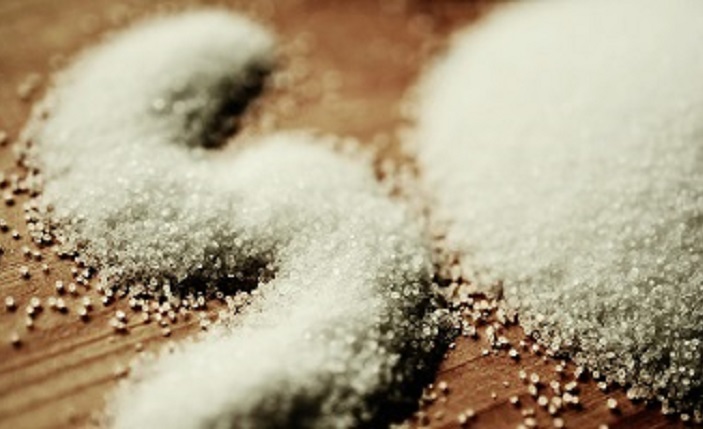




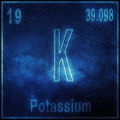
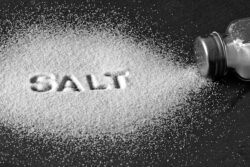




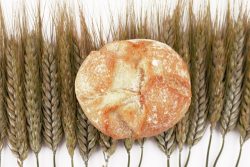


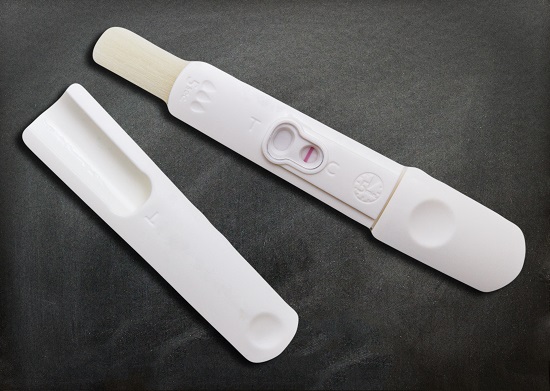
Dear Angela
I have a problem with edema especially in face. I have tried many combinations of high/low sodium/potassium, different amount of water, low carb, but never had any effects. There are some days that I wake up and edema is completely gone for a day or 2 but I can’t figure out why.
I have seen your answers to commenters to have some salt when waterlogged, and I also seen an interview when you said to have more potassium foods and lower salt intake when edema appears. I would appreciate if you have any insight
Dear Joanna,
Thanks for reaching out. May I ask what foods you are eating?
Most people collect edema as a result of eating carbohydrates. I don’t just mean “sugar” but all forms of carbohydrates, such as bread, pasta, potatoes, rice, peas, beans, fruits, etc., are all sugar for your body. Few people realize that a day of eating the Standard American Diet, containing lots of grains, veggies, and fruits, are full of sugar even not a single piece of sugar is added to them. For example, a slice of sourdough bread, which according the to USDA weighs 139 gr, contains 72.1 gr carbohydrates and that includes 3.06 gr fiber. So if I subtract the fiber to get how much sugar (net carbs) is in that slice of sour bread, it comes to 69.0.4 gr carbohydrates. 4 gr carbohydrates is equal to 1 teaspoon sugar, so 69 gr carbohydrates in that slice of sour bread is 69/4 = 17 teaspoons of sugar!! In a single slice of bread. You cannot taste the sugar because it is in the form of starch, and we don’t have the ability to break starch into individual glucose molecules in our mouth, so the bread doesn’t taste like sugar at all! But it is 17 teaspoons of sugar!
The reason why carbohydrates cause edema is because glucose is taken out of the blood and must be put inside of cells. However, glucose cannot just get inside of the cells. A single glucose molecule has 6 water molecules in it and it requires insulin and/or sodium transport into the cells. Therefore, as glucose enters the cells, water and sodium leave the cell. And the water that leaves the cell will end up as edema.
Taking salt and water with carbohydrates amplifies the effect and you will end up with bigger edema each day. It matters what you eat. Trying low carbs once for a short while is not going to help since the edema may take weeks or months to reduce. You need to be consistent. Most importantly, how you take the salt and potassium matters. When you take salt with your food, the salt is not free. Salt is made from sodium and chloride, which separate in your stomach and form different chemical bonds. If you take salt with water, these two form an electrolyte, which ties both salt and water down and this will increase your blood volume. If you eat salt with your food, it will be absorbed into your cells through your intestines rather than as an electrolyte in your blood. So it matters how that salt gets into your body.
The same with potassium. If you take potassium with your water, it becomes an electrolyte and increase potassium in your blood, except that there is barely any potassium in the blood in humans! So taking a potassium supplement is the worst possible way to take potassium. potassium resides inside the cells and so the way to take potassium is with food, so it absorbs through the intestines into the cells and not into the blood.
There is a definite method to how to do this. I teach this to migraine sufferers in my Facebook migraine group here, feel free to join to learn how to hydrate properly.
Best wishes,
Angela
Hello Angela
Thank you for getting back to me so quickly
I’m eating mostly meat, eggs, cheese, cream, milk, potatoes, rice, pasta. I’d say whole foods without excessive carbs, mostly sat fat.
What you say about glucose kicking out water and salt from the cell makes sense, but what about people who eat very high carb diet and not struggling with edema? Does their water ends up somewhere else than extracellular space?
Thank you
Joanna
Joanna,
Potatoes, rice, and pasta are on the list of foods with the highest starch content. A single medium potato has almost 10 teaspoons of sugar equivalent in starch. A bowl of rice (3.5 oz so less than half a cup) has 20 teaspoons of sugar equivalent, and pasta is flour, just like sourdough, so expect a huge starch load that converts to sugar. You may think you are eating healthy but for you body and your genetics you aren’t.
People are different. There are people who can smoke 3 packs of cigarettes a day and live to be 100 with healthy lungs, but most people will end up sick from that. There are people who can live on eating sugar all day long as well but you are not one of them. We each have our strength and weaknesses. Those people who don’t get edema–or at least they don’t see their edema–may have a higher carbohydrate tolerance and their body has better ionic channel functions or they have better kidney functions. We don’t know how they differ.
It may be interesting to mention that before I turned to low carbs way of eating–over 10 years ago–I never noticed I was full of edema! I also didn’t notice that my husband was full of edema. I thought that was “me” at my norm. I had no idea since edema seems to sneak up on you and if it increases little at the time, you may not notice.
However, when I moved to the low carbohydrate diet and lost all my edema, my husband told me that my ankles were back to what he remembered from my youth. I also recovered from many health conditions I had, so this encouraged him to join me. I have a favorite picture of him in my office that I looked at the other day just as he was in my office and wow!! His face is so different! He had huge edema that we didn’t notice! We notice it now that he no longer has it.
So you can’t really say that those other people don’t get edema. Correct?
I recommend you give low carbs another try and this time for a year and see the changes. Try it. 🙂
Angela
I will give it a go. I guess I’m just scared to lower carbs by much because you need glucose and if you don’t feed it you’ll make it internally but then won’t cortisol be constantly elevated to increase your blood sugar?
Joanna, we all make glucose internally. Our red blood cells need a constant supply of glucose. Unless you have glycogen storage disease, in which case you need to be given glucose every 2 hours, your body is making enough glucose to supply your body’s needs under any and every condition. And neither cortisol nor adrenalin have anything to do with glycogen release.
Angela
Angela,
First you say ‘we all make glucose internally’, then you say ‘we cannot make glucose internally’.
Pick one.
And yes, while we make glucose to supply our body’s needs, if one isn’t digesting well, or ABSORBING well, your glycogen levels can become depleted, and when that happens, you break down your own muscle tissue to make that glucose — which happens because cortisol signals that glucose and/or glycogen stores are too low — so there IS indeed a cortisol/adrenal connection.
Prove me wrong. 🙂
Kelly,
Thanks for the note on the typo. No idea how the second sentence appeared there. It was hastily written. We definitely make glucose internally, except in the case of glycogen storage disease, in which case we can’t. This is what that sentence was meant to mean but got confused somehow.
Glycogen storage disease is genetic, anyone who has that has had it from birth. Anyone who was able to store glycogen all his/her life, has no glycogen storage issues, and thus makes glycogen and has plenty to store, and make ongoing 24/7.
You write that one has limited glycogen storage “if one isn’t digesting well, or ABSORBING well”. I amend this to “if one isn’t digesting well, or ABSORBING well, then one is starving and will die” and the glycogen storage is the least of their concern. Cortisol doesn’t signal that glycogen or glucose levels are low. Cortisol acts on the liver, muscle, adipose tissue, and pancreas, and in the liver, high cortisol levels increase gluconeogenesis. So rather than “signaling” that glucose/glycogen is low, cortisol increases glucose and glycogen independently whether there is enough glucose or glycogen at all.
For example, take a person with severe hyperglycemia–very high levels of blood glucose–and put them into a situation where adrenaline releases–say a scary movie, a difficult test, job interview, whatever–and that person’s blood glucose will increase as a result of the released adrenaline leading to released glycogen even though they already had high blood glucose. The activity of adrenaline is not dependent upon low glycogen stores and cortisol releases after the scare is gone and adrenaline is reducing. Cortisol is the anti-inflammatory hormone and not the one you were thinking of, which is adrenaline.
There is one specific case where you may say that cortisol is the signal, but actually it is responding to a signal, and that’s in the case of a sugar crash. When you are about to have a major sugar crash, the brain signals that it is low in sugar and initiates the use of glycogen and lactate (via glial cells) to feed the neurons. I just gave a lecture on this for healthcare providers, so no need for me to provide proofs–after all, if I can teach healthcare providers, then perhaps what I am saying is trustworthy enough for you as well.
If/when the brain once experiences sugar crash, it upregulates glycogen storage. In effect there is a glucose to glycogen and glycogen to glucose “circulating” conversion ongoing all the time in the brain to prepare for such future event(s) and prevent it from happening. The amount of glycogen the glial cells hold is enough for a localized area going down (think TIA) without oxygen and therefore without glucose for up to 100 minutes!
If the brain senses that this isn’t going to be enough or if the sugar crash never happened before, adrenaline will be signaled to release immediately. And with the release of adrenaline, fight-or-flight initiates and that releases massive amounts of glycogen–20 times the amount under normal circumstances. And the large adrenalin release is followed by cortisol release, as always.
Now, you are suggesting a case when the person has no glycogen and no fat storage as a result of malabsorption. You just described a dead person. There is no such person alive without glycogen storage disease. It’s not possible. And if there is no storage of glycogen, muscles converting to glucose in this context make people very sick, and within a very short time (hours to days max) they die.
In summary: your hypothesis is not survivable, so there is no such situation in real life.
Best wishes,
Angela
Okay, so perhaps ‘signal’ was the wrong word, but you prove my point. Cortisol breaks down muscle tissue if there isn’t enough glucose/glycogen/sugar. If “sugar” levels are low.
I didn’t say ‘no glycogen’, I said ‘low glycogen’. As in glycogen depletion when doing keto…
Anyway, your other replies are also so full of inaccuracies, it’s just not worth replying any further.
Best wishes,
Kelly
p.s. Also not sure why this is even posted on hormones matter, since there’s no mention of thiamine — the main focus of the blog…
Kelly,
But no, there is no glycogen depletion in doing keto… I have no idea where you got this from. Every time you eat, whatever you eat, be it keto or SAD or anything else, your glycogen stores are replenished continuously. Keto is still eating. The only time you deplete your glycogen stores is from extreme physical activity, such as running a marathon or equivalent, or from extreme fasting. Under no other “heathy” human processes do you ever deplete your glycogen.
As for why this is posted on HormonesMatter: it’s not just on thiamine. It’s on anything associated with female health, including birth control, hysterectomy, and a host of other things, including being floxed, serotonin, and other things. The main writer of the blog is focused on thiamine and the rest of us, including me these days, are too busy to write on our topic, but will return once I caught my breath and will write again on my topics: migraine, electrolyte, cardiovascular health, nutritional health, brain health, and similar.
Cheers,
Angela
Dear Angela
Isn’t cortisol and adrenaline elevated to increase blood glucose on a low carb diet?
Thank you Joanna
Dear Joanna,
No, there is no need to elevate cortisol and adrenaline on the LC diet to increase glucose. The only organs that must use glucose in our body are: red blood cells and the retina of the eyes. Everything else either uses free fatty acids as the preferred fuel source or ketones or both or all three. The amount of glucose these organs need is produced by the liver from fat deposits called triglycerides via gluconeogenesis. In this process, the liver removes the glycerol cap of the triple fatty acid molecules. Two glycerol caps create a glucose molecule, so our stored fat can be used as free fatty acids for organs that use fat and the glycerol converted to glycogen for those that use glucose.
Our body is not designed to run on glucose. Most of our organs default to using fat–including our heart and even our muscles! The muscles switch to using glucose only under hard physical work. It is stored for such moments when we have to run away from the lion or fight that lion for our lives. It isn’t meant to be used for everyday tasks. There are millions of people now eating various low carbohydrate diets–including me for the past 10 years–feeling calmer than I have ever been and becoming healthier than I ever recall having been even in my youth.
Both cortisol and adrenaline become increased for everyone in the morning as we wake and then reduce over the course of the day, and this is very much independent from what one eats, but it is not independent of metabolic health. Those with metabolic disease have much more cortisol and adrenaline spikes than those with a healthy metabolic system. In my experiments of the many nutritional forms, I have never felt calmer than when I ate no plants at all: on the carnivore diet. All my nutritional needs were met and the healthiest were all my markers.
I wish you would give it a try but try the correct carnivore. Join my group to learn what the correct carnivore is.
Hugs,
Angela
Please what do you think About Morley Root cause protocol and his adrenal coctail -Na+K+vit.C?Thank you❤️
Dear Erika,
My personal opinion is very different from the opinion of Morley and I don’t find his protocol a useful one, especially not since he encourages the supplying of potassium. The supplementation of potassium is very unhealthy. We basically have two compartments in our body: inside cells or outside cells–which is basically the blood.
Sodium and potassium are very important electrolyte minerals, but one is mostly inside the cells and the other is mostly in the blood. And because these two are also charged ions (both sodium and potassium are charged positively), they cannot just come and go in and out of the cells as they wish. For example, if you have too much potassium in your blood, it is referred to as hyperkalemia and it can be fatal.
The normal potassium level in the blood is 3.5 to 5 mEq/L and sodium is 135-145 mEq/L, so about 30-35 times as much sodium in the blood as potassium. When you take a supplement with potassium in it, the blood potassium level can increase drastically. If the blood level of potassium exceeds 7 mEq/L, it is fatal. In this article I discuss supplemental potassium with an emergency room cardiologist and heart surgeon, and also ask what they have to do when a person comes in with hyperkalemia. Please read to find out the terrible things they have to do to force the cells open to allow potassium to leave the blood. It can be extremely dangerous to supplement potassium.
But even more importantly, it is important to understand why sodium supplementation with water–as an electrolyte–is essential whereas with potassium is dangerous. We lose moisture from our body by sweating, by talking, and just by breathing. However, we only lose sodium and water and nothing else. So the only thing you need to replenish what we lose, which is salt and water. If you wish to get a good electrolyte supplement that is only salt and absolutely minimal potassium that replaces the filling agents usually used with salt, then look into Health by Principle electrolyte capsules. I designed this electrolyte supplement (also their magnesium and vitamin D3). I receive no royalties or any financial reward for recommending these products to you.
In summary: I don’t support his protocol at all. Vitamin C can also be harmful becuase the excess will convert to oxalates, and oxalates mixed with calcium in the blood form what is later stuck in the kidneys as kidney stones. It is unnecessary. But if you supplement vitamin C, take a small dose, not larger than 500 mg, and take it when you don’t eat any plants. Vitamin C uses the same receptor in our body as glucose does and glucose has priority for removal from the blood. So if you take vitamin C with fruits or vegetables or grains, you won’t be absorbing any of the vitamin C.
I hope you find this useful.
Best wishes,
Angela
Fantastic article! What’s your take on prolonged edema following a 40 day juice feast? (6 months of edema) went keto May 9, 2023. Went carnivore May 24, 2023. Been on electrolytes. Lab shows slight low sodium. I salt food to taste. Carnivore has helped, but I still have edema. Nurse says nothing alarming on labs. Also, can seltzer water hydrate like plain water please?
Dear Veda,
There are several questions in your comment, so let me list each and then answer each:
1) Edema after 40-day juice feast
2) Labs show slight low sodium
3) I salt food to taste
4) Carnivore helped, but I still have edema
5) Can seltzer water hydrate like plain water?
My answers/addressing each:
1) A juice feast is a really bad idea under any condition because you are drinking high-fructose and glucose without any other nutrients. This not only causes massive electrolyte imbalance and thereby edema, but also damages the liver (non-alcoholic fatty liver disease, NAFLD, is caused by juices), and because sugar is just pure energy using tons of insulin, for the 40 days of this sugar feast, your body was void of any nutrition, even if you ate steak in the closet so no one could see it, the nutrients in the protein would have just converted to glucose because of the high insulin. This was a major bad decision that may have long-lasting or even permanent negative outcome.
2) Since the job of the kidneys is to reset the electrolyte to perfect homeostasis all the time, and your blood makes 5 full trips around the kidneys each hour, if your sodium or potassium are not in the right amount, it has nothing to do with what you eat or drink but everything to do with your kidneys’ inability to process your blood and set it back to homeostasis. This can also be suggestive of cardiovascular damage you may have caused by the juicing, as well as the high glucose in your blood at that time caused damage to the kidneys either at the blood entry into the kidneys–this would be vascular problem–or in the nephrons–this would be the recycling/excretion area where things may not work as a result of hypertension or some other damages–including kidney stones formation.
3) Salting food to taste is not very meaningful in terms of understanding how much salt you are eating. Some people love salty taste and eat a ton of salt with their food “to taste” and other people can’t stand the taste of salt and eat almost no salt when “salting food to taste”. An important point here about salting food is that when you salt your food, the salt (by “salt” I am referring to sodium, since in our body salt breaks up into sodium and chloride) is absorbed via the intestines into the inside of the cells. And that’s the wrong place for sodium to be. If you look at your electrolyte panel on your blood test, you will see that sodium should be in the range of 135-145 mEq/L and potassium 3.5-5 mEq/L–these numbers may be slightly different by lab interpretation, but they should be similar. As you can see, there is over 33 times as much sodium in the blood as potassium. But inside of the cells it is the exact opposite: about 33 times more potassium than sodium. Since both sodium and potassium are charged metals, when there is too much sodium inside the cells–from eating overly salted foods–it’s not possible for the extra sodium to just come out. It must leave using ATP energy via voltage gated channels or pumps in exchange of potassium ions and/or glucose!
Your body is not an inanimate box where you can just pour stuff into and hope the right mix goes to the right place. It is an organic dynamic system where everything is in motion all the time and where you deposit something, and what you deposit, can make or break your life. Eating salt to taste, therefore, may be a bad idea. While I know that most everyone does just that, most everyone is eating the wrong foods–see your comment on juicing! In sum: food is your life; you don’t live to eat, you eat to live. You need to spend a lot more attention to what foods you eat and why!
4) Carnivore is not a cure-all, particularly if done incorrectly. Most people think that carnivore means eating just meat and not much else. That’s incorrect. If you wish to learn the true carnivore, join my Facebook migraine group.
5) Seltzer water is water with a buffer–a buffer is something that reduces your stomach acid and long-term is a bad thing. Other than that. water in any form is not hydrating!
Let me repeat this important point: water is not hydration! Water is actually a solvent!
What does this mean? Whatever you add to water with any electrical charge will start to dissolve… hmmm… so how can a solvent that dissolves thing be hydrating? It cannot. I think this is one of the biggest misinformation in our modern life, that water is hydrating. Drinking water actually dehydrates. I think I should write an article on this so instead of explaining all the details here, I just make a recommendation to you without much explanation. Adding salt to water stops water from being a solvent and the salt makes water into an electrolyte. If you want to drink water for hydration, drink it with a little bit of salt.
As for the main question in your comment about edema: edema is the outcome of not having sodium (salt) in the right place in your body. Salt should be in your blood and not in your cells. Edema suggests that the homeostasis of your cells got messed up and water was released as a result of sodium leaving–likely from the juicing. It requires proper balance of nutrients for a long time to regain your health.
Angela
Dear Angela,
I wrote above about my daughter. She stopped the drug 8 months ago and the edema is still here. She stopped as soon as it appeared. Did the drug damage her is some way? Can her sodium/ potassium channels be damaged? We have seen so many doctors and no one can help her. No one seems to understand how this drug works. She took it for pelvic pain.
Dear Anne,
I have seen 5 comments from you and all refer to the same case, so I just respond to one to simplify things. In one of your posts you also added that she was taking Gabapentin but stopped, and is now supplementing potassium, magnesium, calcium and sodium. So let me help you take this whole thing apart.
Gabapentin:
From Wikipedia: “Gabapentin is a ligand [ligand = connects to] of the α2δ calcium channel subunit.[69][70] α2δ is an auxiliary protein connected to the main α1 subunit (the channel-forming protein) of high voltage activated voltage-dependent calcium channels (L-type, N-type, P/Q type, and R-type).[9] Gabapentin is not a direct channel blocker: it exerts its actions by disrupting the regulatory function of α2δ and its interactions with other proteins. Gabapentin prevents delivery of the calcium channels to the cell membrane, reduces the activation of the channels by the α2δ subunit, decreases signaling leading to neurotransmitters release, and disrupts interactions of α2δ with NMDA receptors, neurexins, and thrombospondins.[9][10][11] Out of the four known isoforms of α2δ protein, gabapentin binds with similar high affinity to two: α2δ-1 and α2δ-2.[70]… Gabapentin is a potent activator of voltage-gated potassium channels KCNQ3 and KCNQ5″
I highlighted some of the sentence parts with bold because those are the problem areas for your daughter both for the edema and also for what she is supplementing, and why there may be some permanent damage.
Basically the bolded sentences mean the following:
1) Gabapentin blocks both L and R type calcium channels. L is associated with the heart and R with the brain in the cortex, hippocampus, striatum, amygdala and interpeduncular nucleus. (here). These calcium channels are responsible for the function of the heart for its beat (L type) and the neurotransmitter release in the brain (R type). As a result, her brain and cardiovascular systems are significantly affected in how they can function.
2) Calcium must enter the neurons to have the neuron release it’s neurotransmitters. Neurons that cannot communicate, degenerate. So this drug degenerated her brain–this doesn’t mean the brain remains degenerated. It may recover over time.
3) Gabapentin activates voltage-gated potassium channels. This is also a problem because of how the brain must have sodium and potassium in a particular ratio (3:2 sodium:potassium) in order to properly function and be able to start action and resting potentials. Neuronal communication starts with sodium rushing into the cells and this initiates action potential–the start of voltage–and once the voltage started, in those areas where the voltage started it is an action potential. When that is started, immediately sodium must leave the cell and potassium must rush into the cell, and this creates the resting potential, which stops the voltage at that particular point in the neuron.
The voltage is going from sodium channel to sodium channel of the neuron (Nodes of Ranvier) as the action potential goes all the way to the end of the neuron. The resting potential follows all the way, in step, with a tiny delay, putting the voltage out. When the voltage reaches the foot of the neuron, that is where the voltage-gated calcium channels come into action, where calcium rushes into the neuron and literally kicks the neurotransmitters into the synaptic cleft, which is the area between neurons. From here the connected neuron can pick the neurotransmitter up and start its own action and resting potential and send the neurotransmitter to the next neuron it is connected to.
So all of these activities are blocked in the brain except for the potassium channels, which are actually enhanced and activated. And this blocks all chance for an action potential. So her brain basically came to a standstill while on Gabapentin.
Now, she stopped Gabapentin 8 months ago, but while she was taking it, neither her heart nor her brain was able to work properly and drugs that inhibit, do so by connecting (ligand as I noted above) to proteins. And that’s very dangerous, because the connection may damage the folding of the particular protein and it may render it damaged for life. We don’t know if any of this happened but can be. In addition, since her heart was also controlled by this drug, and the heart cannot heal very well because it cannot stop or slow down, it changed her vascular behavior.
The edema is associated with her vascular system not functioning the way that it should. Add to this that she is supplementing electrolyte minerals that she shouldn’t. Please read my article on why supplementing with potassium is a very bad idea. Also, supplementing with calcium may be a bad idea, particularly if she isn’t also supplementing with D3, K2, magnesium, and vitamin C, and assuming that she even needs to supplement with calcium. Supplementing with calcium should only be done in small amounts at the time since the body can only absorb 400 mg at once and while calcium is water soluble, in the body it is fat-soluble.
Calcium supplementing also requires a high-protein diet because over 40% of the bones is protein, which creates a scaffolding onto which calcium can adhere to form bone. So if she is not eating a lot of animal products high in protein, protein synthesis is not going to happen very easily and so her ability to place that calcium anywhere useful is questionable.
And finally: being able to take salt as part of her electrolytes requires that she drink enough water for her weight. For females the minimum water a day is 55% of her weight in pounds. So a female weighing 100 lbs would need 55 ounces (7 cups of 8 oz water each) minimum a day. If she drinks less water than this and if she eats a lot of carbohydrates, her body will hold onto water and also salt, hence the edema. It also matters how much sodium she is taking at once.
I would recommend that she join my Facebook migraine group where she can learn how to eat and what to help recover and stop the edema.
I hope this message is helpful for you.
Best wishes,
Angela
Thank you!
Angela,
I sent this to my daughter and she is so upset. Is it possible to have a private consult with you?
Thanks Anne,
I believe your daughter has already joined my migraine group on Facebook. If you need further guidance, please feel free to contact me by email: angela@migraine-book.com.
Best wishes,
Angela
My daughter took a drug called gabapentin and has been struggling with Edema in her hands and feet ever since, painful Edema. She has also recently tried to cut her carbs out and add in a lot more healthy things like eggs meat liver fish etc. Is there anything else she can do to stop the edema.
Dear Anne,
I am very sorry that your daughter is taking Gabapentin. This drugs is a voltage gated calcium channel blocker, which disrupts neuronal communication. In addition, it is a strong activator of voltage-gated potassium channels, meaning it increases fluids leaving cells. So this explains the edema of your daughter. The low carbohydrate diets will not help with edema caused by a drug. To stop the drug-caused edema, she needs to discuss discontinuation of the drug with her doctor.
Since Gabapentin is prescribed for many conditions, including migraines, if migraines are the reason for the medication, there are way better alternatives out there. If she was prescribed this for seizures, she should contact the Charlie Foundation for help. If for migraine or nerve pain, she should join my Facebook group and we can help her learn to prevent migraine and reduce/prevent nerve pain, depending of the cause.
Best wishes,
Angela
These articles are helping me understand so much more. But I still have problems I cannot fix. I am on a carnivore diet and I have tried increasing my salt intake and drinking small amounts of milk. It has helped a little, but I still have problems with minor muscle cramps but mainly lack of power when exercising.
It would be great to hear your thoughts, thank you.
Dear Sammy,
The problems can have a lot to do with you body’s struggle with insulin resistance. Many people have a hard time because additional steps are often necessary and the switch to a new diet is not enough. Please join us in my Facebook migraine group where you will learn how to apply the carnivore diet right.
Best,
Angela
This is such helpful information. I am now on a low carb high fat (LCHF) diet, thanks so much for sharing this.